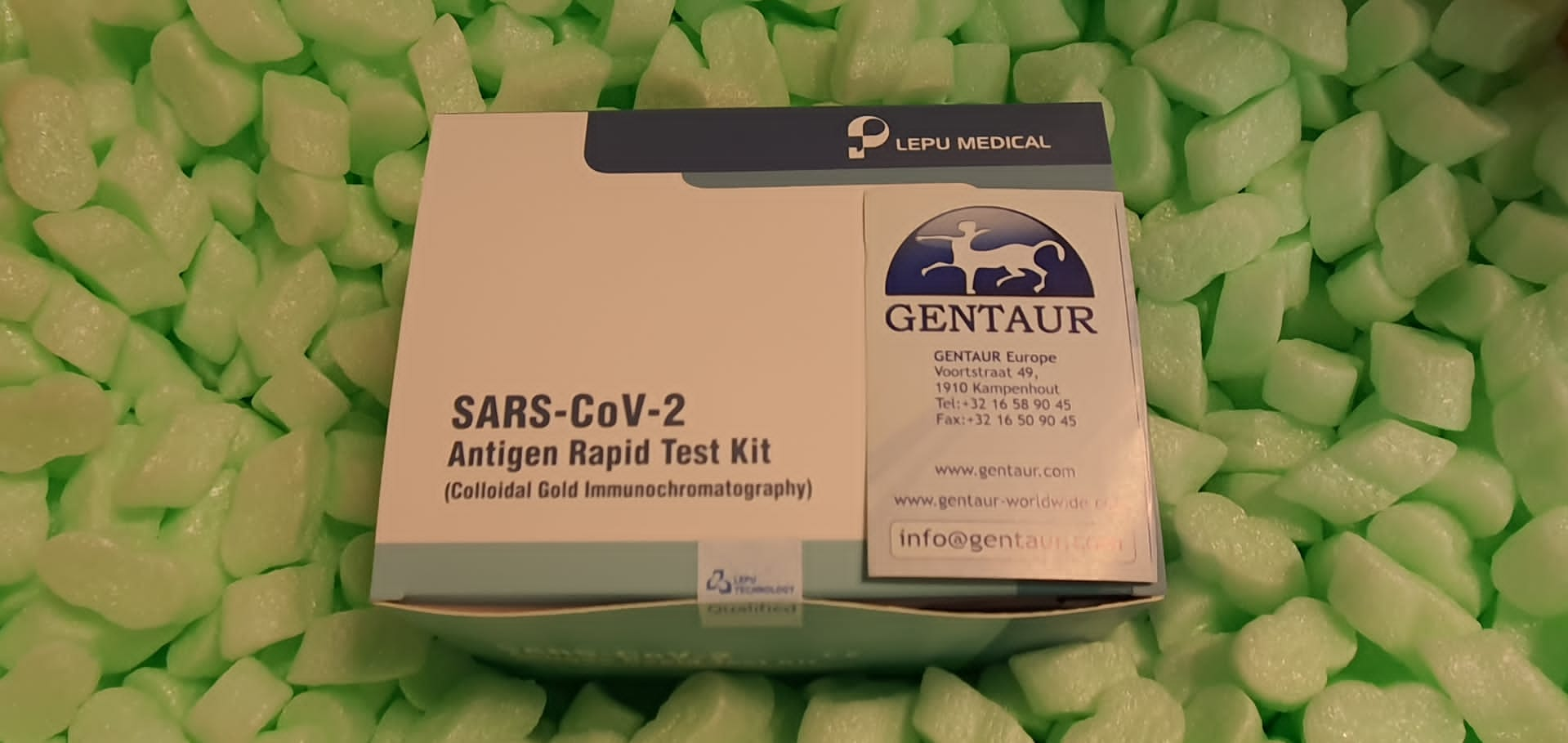Modules that switch protein-protein interactions on and off are important to develop artificial biology; for instance, to assemble orthogonal signaling pathways, to manage synthetic protein constructions dynamically, and for protein localization in cells or protocells. In nature, the E. coli MinCDE system {couples} nucleotide-dependent switching of MinD dimerization to membrane targeting to set off spatiotemporal sample formation.
Here we current a de novo peptide-based molecular switch that toggles reversibly between monomer and dimer in response to phosphorylation and dephosphorylation. In mixture with different modules, membrane ‘anchor’; and (ii) creating a ‘membrane-avidity switch’ that mimics the MinD system however operates by reversible phosphorylation. These minimal, de novo molecular switches have potential purposes for introducing dynamic processes into designed and engineered proteins to enhance features in dwelling cells and add performance to protocells.
Heavy ions are riveting in radiation biophysics, notably within the areas of radiotherapy and house radiation safety. Accelerated charged particles can certainly penetrate deeply within the human physique to sterilize tumors, exploiting the favorable depth-dose distribution of ions in comparison with standard X rays. Conversely, the excessive organic effectiveness in inducing late results presents a hazard for manned house exploration. Even after half a century of accelerator-based experiments, medical purposes and flight analysis, these two subjects stay each fascinating and baffling.
Heavy-ion remedy may be very costly, and regardless of the medical success it stays controversial. Research on late radiation morbidity in spaceflight led to a discount in uncertainty, but additionally pointed to new dangers beforehand underestimated, resembling potential harm to the central nervous system. Recently, heavy ions have additionally been utilized in different, unanticipated biomedical fields, resembling therapy of coronary heart arrhythmia or inactivation of viruses for vaccine improvement. Heavy-ion science properly merges physics and biology and stays a unprecedented analysis area for the 21st century.
Computational mannequin of cardiomyocyte apoptosis identifies mechanisms of tyrosine kinase inhibitor-induced cardiotoxicity
Despite medical observations of cardiotoxicity amongst most cancers sufferers handled with tyrosine kinase inhibitors (TKIs), the molecular mechanisms by which these medicine have an effect on the center stay largely unknown. Mechanistic understanding of TKI-induced cardiotoxicity has been restricted partially because of the complexity of tyrosine kinase signaling pathways and the multi-targeted nature of many of these medicine. TKI therapy has been related to reactive oxygen species technology, mitochondrial dysfunction, and apoptosis in cardiomyocytes.
To achieve perception into the mechanisms mediating TKI-induced cardiotoxicity, this research constructs and validates a computational mannequin of cardiomyocyte apoptosis, integrating intrinsic apoptotic and tyrosine kinase signaling pathways. The mannequin predicts excessive ranges of apoptosis in response to sorafenib, sunitinib, ponatinib, trastuzumab, and gefitinib, and decrease ranges of apoptosis in response to nilotinib and erlotinib, with the best stage of apoptosis induced by sorafenib. Knockdown simulations recognized AP1, ASK1, JNK, MEK47, p53, and ROS as constructive purposeful regulators of sorafenib-induced apoptosis of cardiomyocytes.
Overexpression simulations recognized Akt, IGF1, PDK1, and PI3K among the many unfavourable purposeful regulators of sorafenib-induced cardiomyocyte apoptosis. A combinatorial display screen of the constructive and unfavourable regulators of sorafenib-induced apoptosis revealed ROS knockdown coupled with overexpression of FLT3, FGFR, PDGFR, VEGFR, or KIT as a notably potent mixture in lowering sorafenib-induced apoptosis Network simulations of combinatorial therapy with sorafenib and the antioxidant N-acetyl cysteine (NAC) counsel that NAC might shield cardiomyocytes from sorafenib-induced apoptosis.
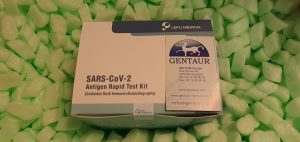
Metabolic health landscapes predict the evolution of antibiotic resistance
Bacteria evolve resistance to antibiotics by a multitude of mechanisms. A central, but unsolved query is how resistance evolution impacts cell development at completely different drug ranges. Here, we develop a health mannequin that predicts development charges of frequent resistance mutants from their results on cell metabolism. The mannequin maps metabolic results of resistance mutations in drug-free environments and underneath drug problem; the ensuing health trade-off defines a Pareto floor of resistance evolution.
We predict evolutionary trajectories of development charges and resistance ranges, which characterize Pareto resistance mutations rising at completely different drug dosages. We additionally predict the prevalent resistance mechanism relying on drug and nutrient ranges: low-dosage drug defence is mounted by regulation, evolution of distinct metabolic sectors units in at successive threshold dosages. Evolutionary resistance mechanisms embody membrane permeability adjustments and drug goal mutations.
These predictions are confirmed by empirical development inhibition curves and genomic information of Escherichia coli populations. Our outcomes present that resistance evolution, by coupling main metabolic pathways, is strongly intertwined with methods biology and ecology of microbial populations.
Bacillus spp. are the principle sources of subtilisin E, which has a number of purposes in biotechnology. The 3D construction of subtilisin E has a important affect on its efficacy. In this research, we evaluated subtilisin E from Bacillus subtilis subsp. subtilis str. 168 by bioinformatic strategies. The outcomes revealed that the subtilisin E sequence from B. subtilis incorporates extremely conserved amino acids, together with histidine (H), aspartic acid (D) and serine (S).
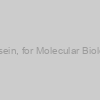 Casein, for Molecular Biology |
|
MB279-100G |
EWC Diagnostics |
1 unit |
EUR 110.77 |
|
Description: Casein, for Molecular Biology |
 Casein, for Molecular Biology |
|
MB279-500G |
EWC Diagnostics |
1 unit |
EUR 387.65 |
|
Description: Casein, for Molecular Biology |
 2-Mercaptoethanol ?For Molecular Biology |
|
MB041-100ML |
EWC Diagnostics |
1 unit |
EUR 9.02 |
|
Description: 2-Mercaptoethanol ?For Molecular Biology |
 2-Mercaptoethanol ?For Molecular Biology |
|
MB041-500ML |
EWC Diagnostics |
1 unit |
EUR 26.47 |
|
Description: 2-Mercaptoethanol ?For Molecular Biology |
) RNase/DNase free water, for molecular biology (10 x 1.5ml) |
|
Z-RNase/DNase-free-water |
Novacyt Group |
n/a |
EUR 62 |
 Molecular Biology Grade Water for RT-PCR |
|
ML065-1.5ML |
EWC Diagnostics |
1 unit |
EUR 7.82 |
|
Description: Molecular Biology Grade Water for RT-PCR |
) Tris (Molecular Biology Grade) |
|
CE237 |
GeneOn |
500 g |
EUR 106.8 |
) Tris (Molecular Biology Grade) |
|
CE238 |
GeneOn |
1 kg |
EUR 153.6 |
) Tris (Molecular Biology Grade) |
|
CE239 |
GeneOn |
5 kg |
EUR 535.2 |
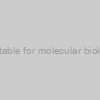 Pyridine, GlenBiol™, suitable for molecular biology with molecular sieve |
|
GS8780-2500 |
Glentham Life Sciences |
2500 |
EUR 249.8 |
|
|
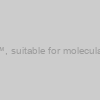 Dimethylformamide, GlenBiol™, suitable for molecular biology with molecular sieve |
|
GS3406-2500 |
Glentham Life Sciences |
2500 |
EUR 116.2 |
|
|
) DTT (Molecular Biology Grade) |
|
CE131 |
GeneOn |
5 g |
EUR 93.6 |
) DTT (Molecular Biology Grade) |
|
CE132 |
GeneOn |
10 g |
EUR 133.2 |
) DTT (Molecular Biology Grade) |
|
CE133 |
GeneOn |
25 g |
EUR 243.6 |
) NAD (Molecular Biology Grade) |
|
CE196 |
GeneOn |
1 g |
EUR 72 |
) NAD (Molecular Biology Grade) |
|
CE197 |
GeneOn |
5 g |
EUR 165.6 |
) NBT (Molecular Biology Grade) |
|
CE209 |
GeneOn |
1 g |
EUR 123.6 |
) NBT (Molecular Biology Grade) |
|
CE210 |
GeneOn |
5 g |
EUR 360 |
 Dimethylformamide, GlenBiol™, suitable for molecular biology |
|
GS6580-2500 |
Glentham Life Sciences |
2500 |
EUR 107.3 |
|
|
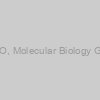 DMSO, Molecular Biology Grade |
|
40470006-1 |
Glycomatrix |
100 mL |
EUR 88.18 |
 DMSO, Molecular Biology Grade |
|
40470006-2 |
Glycomatrix |
250 mL |
EUR 150.19 |
 DMSO, Molecular Biology Grade |
|
40470006-3 |
Glycomatrix |
500 mL |
EUR 279.26 |
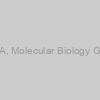 EGTA, Molecular Biology Grade |
|
40500028-2 |
Glycomatrix |
50 g |
EUR 106.43 |
 EGTA, Molecular Biology Grade |
|
40500028-3 |
Glycomatrix |
100 g |
EUR 177.58 |
 EGTA, Molecular Biology Grade |
|
40500028-4 |
Glycomatrix |
500 g |
EUR 603.19 |
 EGTA, Molecular Biology Grade |
|
40500028-5 |
Glycomatrix |
1 kg |
EUR 912.98 |
 EGTA, Molecular Biology Grade |
|
40500028-6 |
Glycomatrix |
2 kg |
EUR 1687.94 |
) BCIP (Molecular Biology Grade) |
|
CE108 |
GeneOn |
250 mg |
EUR 75.6 |
) BCIP (Molecular Biology Grade) |
|
CE109 |
GeneOn |
1 g |
EUR 108 |
) DAPI (Molecular Biology Grade) |
|
CE117 |
GeneOn |
5 mg |
EUR 72 |
) DAPI (Molecular Biology Grade) |
|
CE118 |
GeneOn |
25 mg |
EUR 159.6 |
) DAPI (Molecular Biology Grade) |
|
CE119 |
GeneOn |
100 mg |
EUR 382.8 |
) CHAPS (Molecular Biology Grade) |
|
CE114 |
GeneOn |
1 g |
EUR 66 |
) CHAPS (Molecular Biology Grade) |
|
CE115 |
GeneOn |
5 g |
EUR 157.2 |
) CHAPS (Molecular Biology Grade) |
|
CE116 |
GeneOn |
25 g |
EUR 492 |
) HEPES (Molecular Biology Grade) |
|
CE171 |
GeneOn |
100 g |
EUR 98.4 |
) HEPES (Molecular Biology Grade) |
|
CE172 |
GeneOn |
500 g |
EUR 268.8 |
) HEPES (Molecular Biology Grade) |
|
CE173 |
GeneOn |
1 kg |
EUR 424.8 |
) Water (Molecular Biology Grade) |
|
CE243 |
GeneOn |
500 ml |
EUR 62.4 |
) Water (Molecular Biology Grade) |
|
CE244 |
GeneOn |
1 l |
EUR 67.2 |
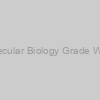 Molecular Biology Grade Water |
|
ML024-100ML |
EWC Diagnostics |
1 unit |
EUR 3.54 |
|
Description: Molecular Biology Grade Water |
 Molecular Biology Grade Water |
|
ML024-10X100ML |
EWC Diagnostics |
1 unit |
EUR 29.52 |
|
Description: Molecular Biology Grade Water |
 Molecular Biology Grade Water |
|
ML024-10X500ML |
EWC Diagnostics |
1 unit |
EUR 87.91 |
|
Description: Molecular Biology Grade Water |
 Molecular Biology Grade Water |
|
ML024-500ML |
EWC Diagnostics |
1 unit |
EUR 12.56 |
|
Description: Molecular Biology Grade Water |
 Molecular Biology Grade Water |
|
ML064-100ML |
EWC Diagnostics |
1 unit |
EUR 3.67 |
|
Description: Molecular Biology Grade Water |
 Molecular Biology Grade Water |
|
ML064-10X100ML |
EWC Diagnostics |
1 unit |
EUR 25.38 |
|
Description: Molecular Biology Grade Water |
 Molecular Biology Grade Water |
|
ML064-500ML |
EWC Diagnostics |
1 unit |
EUR 10.81 |
|
Description: Molecular Biology Grade Water |
 Double distilled for Molecular Biology) Phenol, (Carbolic acid) Double distilled for Molecular Biology |
|
PD0252 |
Bio Basic |
500g |
EUR 192.59 |
|
|
) Formamide deionized (Molecular Biology Grade) |
|
CE145 |
GeneOn |
500 ml |
EUR 87.6 |
) Formamide deionized (Molecular Biology Grade) |
|
CE146 |
GeneOn |
1 l |
EUR 120 |
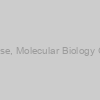 Agarose, Molecular Biology Grade |
|
40100164-1 |
Bio-WORLD |
25 g |
Ask for price |
|
|
 Agarose, Molecular Biology Grade |
|
40100164-2 |
Bio-WORLD |
50 g |
Ask for price |
|
|
 Agarose, Molecular Biology Grade |
|
40100164-3 |
Bio-WORLD |
100 g |
Ask for price |
|
|
 Agarose, Molecular Biology Grade |
|
40100164-4 |
Bio-WORLD |
500 g |
Ask for price |
|
|
 Agarose, Molecular Biology Grade |
|
40100164-5 |
Bio-WORLD |
1 kg |
Ask for price |
|
|
) Glycine (Molecular Biology Grade) |
|
CE158 |
GeneOn |
1 kg |
EUR 84 |
) Glycine (Molecular Biology Grade) |
|
CE159 |
GeneOn |
5 kg |
EUR 228 |
) Tween20 (Molecular Biology Grade) |
|
CE242 |
GeneOn |
1 l |
EUR 106.8 |
) Agarose (Molecular Biology Grade) |
|
abx299715-100g |
Abbexa |
100 µg |
Ask for price |
) Agarose (Molecular Biology Grade) |
|
abx299715-20g |
Abbexa |
20 µg |
EUR 525 |
) Agarose (Molecular Biology Grade) |
|
abx299715-50g |
Abbexa |
50 µg |
Ask for price |
) Lysozyme (Molecular Biology Grade) |
|
CE188 |
GeneOn |
1 g |
EUR 70.8 |
) Lysozyme (Molecular Biology Grade) |
|
CE189 |
GeneOn |
10 g |
EUR 247.2 |
) Lysozyme (Molecular Biology Grade) |
|
CE189L |
GeneOn |
50 g |
EUR 310 |
) Lysozyme (Molecular Biology Grade) |
|
CE189XL |
GeneOn |
250 g |
EUR 1050 |
 TRIS-Glycine Buffer 10X, GlenBiol™, suitable for molecular biology |
|
GE6710-250 |
Glentham Life Sciences |
250 |
EUR 22.7 |
|
|
) Tris-EDTA buffer solution (10X, suitable for molecular biology, pH 8.0) |
|
GX7489-1 |
Glentham Life Sciences |
1 |
EUR 22.7 |
|
|
) Tris-EDTA buffer solution (10X, suitable for molecular biology, pH 8.0) |
|
GX7489-2500 |
Glentham Life Sciences |
2500 |
EUR 45.2 |
|
|
) Tris-EDTA buffer solution (10X, suitable for molecular biology, pH 8.0) |
|
GX7489-500 |
Glentham Life Sciences |
500 |
EUR 15.9 |
|
|
 "10X PBS, Molecular Biology Grade" |
|
ML023-100ML |
EWC Diagnostics |
1 unit |
EUR 17.65 |
|
Description: "10X PBS, Molecular Biology Grade" |
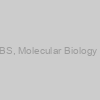 10X PBS, Molecular Biology Grade |
|
ML023-500ML |
EWC Diagnostics |
1 unit |
EUR 38.97 |
|
Description: 10X PBS, Molecular Biology Grade |
 "10X TBS, Molecular Biology Grade" |
|
ML029-100ML |
EWC Diagnostics |
1 unit |
EUR 19.04 |
|
Description: "10X TBS, Molecular Biology Grade" |
 "10X TBS, Molecular Biology Grade" |
|
ML029-500ML |
EWC Diagnostics |
1 unit |
EUR 40.48 |
|
Description: "10X TBS, Molecular Biology Grade" |
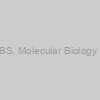 10X TBS, Molecular Biology Grade |
|
ML029-6X500ML |
EWC Diagnostics |
1 unit |
EUR 138.56 |
|
Description: 10X TBS, Molecular Biology Grade |
) Tris - Hydrochloride (Molecular Biology Grade) |
|
CE234 |
GeneOn |
250 g |
EUR 99.6 |
) Tris - Hydrochloride (Molecular Biology Grade) |
|
CE235 |
GeneOn |
500 g |
EUR 144 |
) Tris - Hydrochloride (Molecular Biology Grade) |
|
CE236 |
GeneOn |
1 kg |
EUR 223.2 |
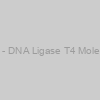 OORA00218-100IU - DNA Ligase T4 Molecular Biology Grade |
|
OORA00218-100IU |
Aviva Systems Biology |
100Units |
EUR 129 |
|
|
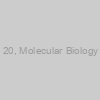 Tween 20, Molecular Biology Grade |
|
T9100-010 |
GenDepot |
100ml |
EUR 86.4 |
 Tween 20, Molecular Biology Grade |
|
T9100-050 |
GenDepot |
500ml |
EUR 133.2 |
 Tween 20, Molecular Biology Grade |
|
T9100-100 |
GenDepot |
1L |
EUR 160.8 |
 Agarose LE, Ultra-Pure Molecular Biology Grade, 100 g |
|
41028-100G |
Biotium |
100G |
EUR 201 |
|
|
|
Description: N/A |
 Agarose LE, Ultra-Pure Molecular Biology Grade, 100 g |
|
41028-100G-1 |
Biotium |
EA |
EUR 201 |
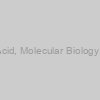 Boric Acid, Molecular Biology Grade |
|
40200060-1 |
Glycomatrix |
500 g |
EUR 46.16 |
 Boric Acid, Molecular Biology Grade |
|
40200060-2 |
Glycomatrix |
1 kg |
EUR 76.66 |
 Boric Acid, Molecular Biology Grade |
|
40200060-3 |
Glycomatrix |
2.5 kg |
EUR 145.5 |
-Sucrose (Molecular Biology Grade)) D(+)-Sucrose (Molecular Biology Grade) |
|
CE224 |
GeneOn |
500 g |
EUR 67.2 |
-Sucrose (Molecular Biology Grade)) D(+)-Sucrose (Molecular Biology Grade) |
|
CE225 |
GeneOn |
1 kg |
EUR 84 |
-Sucrose (Molecular Biology Grade)) D(+)-Sucrose (Molecular Biology Grade) |
|
CE226 |
GeneOn |
5 kg |
EUR 207.6 |
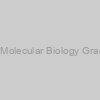 20xSSC, Molecular Biology Grade, pH7.0 |
|
TBS5033-1L |
Tribioscience |
1L |
EUR 67 |
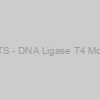 OORA00218-100UNITS - DNA Ligase T4 Molecular Biology Grade |
|
OORA00218-100UNITS |
Aviva Systems Biology |
100Units |
EUR 149 |
|
|
) Glycerol 87 % (Molecular Biology Grade) |
|
CE154 |
GeneOn |
1 l |
EUR 93.6 |
) MOPS buffer (Molecular Biology Grade) |
|
CE194 |
GeneOn |
100 g |
EUR 102 |
) MOPS buffer (Molecular Biology Grade) |
|
CE195 |
GeneOn |
250 g |
EUR 169.2 |
 Agarose, Molecular Biology Grade, 100g |
|
PC0701-100g |
Vivantis |
each |
Ask for price |
 Agarose, Molecular Biology Grade, 1kg |
|
PC0701-1kg |
Vivantis |
each |
Ask for price |
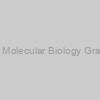 Agarose, Molecular Biology Grade, 500g |
|
PC0701-500g |
Vivantis |
each |
Ask for price |
 TRIS-Glycine-SDS Buffer 10X, GlenBiol™, suitable for molecular biology |
|
GE9118-1 |
Glentham Life Sciences |
1 |
EUR 75.3 |
|
|
 TRIS-Glycine-SDS Buffer 10X, GlenBiol™, suitable for molecular biology |
|
GE9118-250 |
Glentham Life Sciences |
250 |
EUR 30.1 |
|
|
) Dimethylsulfoxide (Molecular Biology Grade) |
|
CE120 |
GeneOn |
100 ml |
EUR 66 |
Subtilisin E cleaves the bonds between hydrophobic and polar amino acids in keratin-associated proteins. The results of level mutations on the crystal construction of subtilisin E (PDB ID: 1SCJ) confirmed that adjustments of asparagine 123 (N123) to valine (V) and serine 331 (S331) to leucine (L) respectively, had been probably the most stabilizing. Genomic evaluation of the subtilisin E-coding gene (aprE) indicated that this gene and the yhfN gene are expressed by way of a σA promoter.

